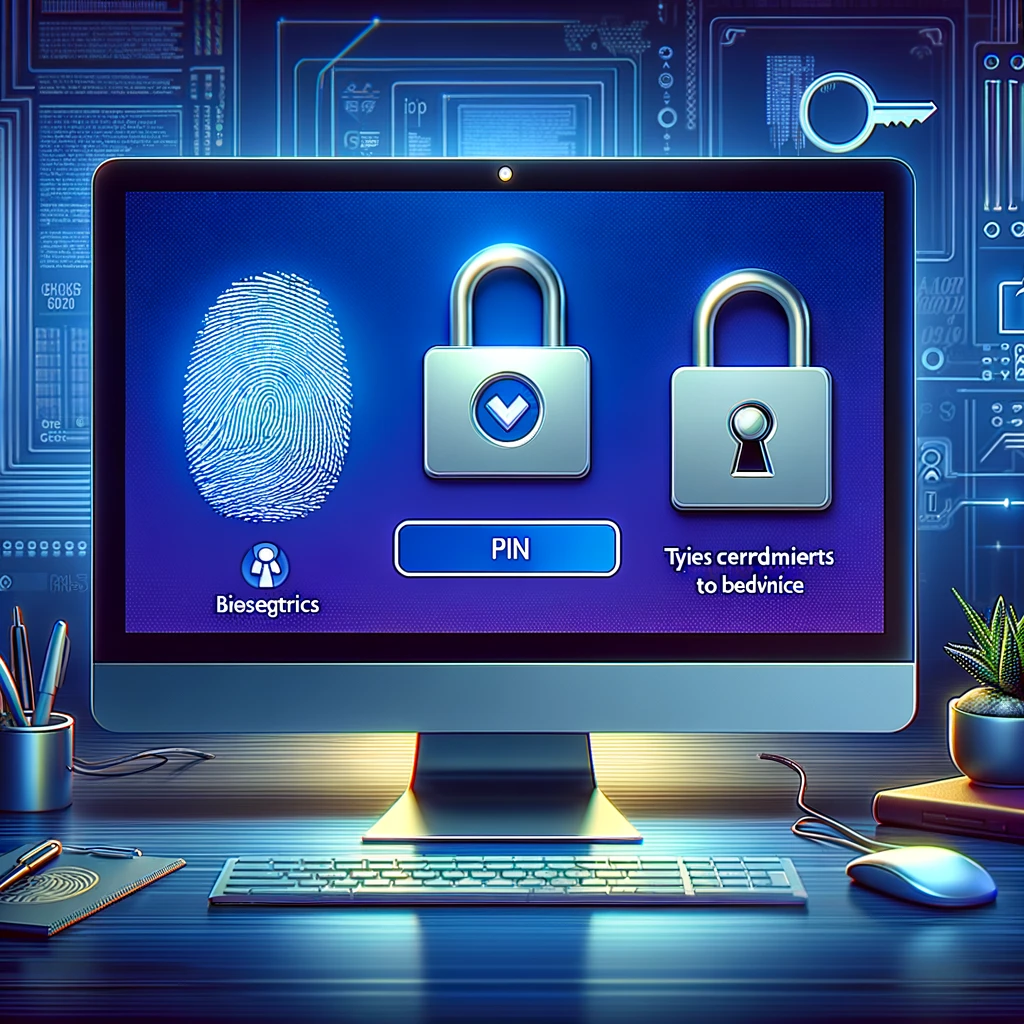Estimated reading time: 4 minutes
In the fast-paced digital world, OliveTech is at the forefront, championing passwordless authentication. This cutting-edge method not only boosts security but also simplifies user access.
What Passwordless Authentication Entails
Passwordless authentication does away with traditional passwords. Instead, it employs alternatives like fingerprints, facial recognition, or security keys. Thus, it revolutionizes the login process, making it both smoother and safer.
Why Choose Passwordless?
Traditional passwords are often a security weak spot. They can be easily breached, leading to data leaks and financial damage. In contrast, passwordless options significantly ramp up security. Moreover, they reduce the strain on IT departments and improve user experiences.
Supportive Statistics
- Easing IT Burden: Remarkably, 35% of businesses report a decrease in IT workload with passwordless systems.
- Growing Trend: Impressively, 92% of businesses are moving towards passwordless technology, with 95% having adopted some aspects already.
- User Satisfaction: Significantly, 61% of users report frustration with the hassles of traditional MFA.
Diverse Passwordless Solutions


- Windows Hello for Business:
- Function: Uses biometrics or PINs, linked to a specific PC.
- Ideal For: Individuals with personal PCs, as it bolsters device-specific security.
- Security Plus: It effectively blocks unauthorized access, tying credentials to the device.
- Windows Hello for Business:
- Microsoft Authenticator:
- How it Functions: Transforms smartphones into secure authentication devices.
- User Experience: It greatly simplifies logging in with straightforward mobile prompts.
- Best Suited For: Organizations aiming to incorporate mobile devices into their security strategy.
- Microsoft Authenticator:
- FIDO2 Security Keys:
- Concept: Small physical devices used for high-security logins, adhering to FIDO standards.
- Security Level: Exceptionally high, immune to phishing.
- Ideal Usage: Best for environments demanding the utmost security.
- FIDO2 Security Keys:
- Certificate-Based Authentication (CBA):
- Mechanism: Utilizes digital certificates for user verification.
- Phishing Resistance: Offers a high level of security against phishing.
- Appropriate For: Secure browser sign-ins and environments where managing digital certificates is practical.
- Certificate-Based Authentication (CBA):
Implementing Passwordless Sign-In
Starting with passwordless authentication is straightforward, particularly with applications like Microsoft Authenticator.
Steps for Microsoft Authenticator Integration:
- Assessment: First, check if your systems are compatible with the app.
- Installation: Then, download and set up the Authenticator app on employee smartphones.
- Configuration: Next, configure the app to work with your organization’s systems.
- Training: Subsequently, train your staff on using the app securely.
- Testing: Finally, run a pilot phase to smooth out any kinks before full deployment.

Embracing a Future of Enhanced Security and Ease
Shifting to a passwordless login is a strategic decision. It not only simplifies access but also significantly strengthens defenses against cyber threats.
At OliveTech, we are dedicated to guiding businesses through evolving IT solutions. Passwordless authentication is a key step in this direction, promising enhanced data protection and a more user-friendly experience. As digital risks grow, adopting advanced security methods like passwordless is essential.
Interested in exploring passwordless solutions for your business? Contact OliveTech for expert advice and tailored services. Let’s step together into a safer, more streamlined digital era.
More Reading
